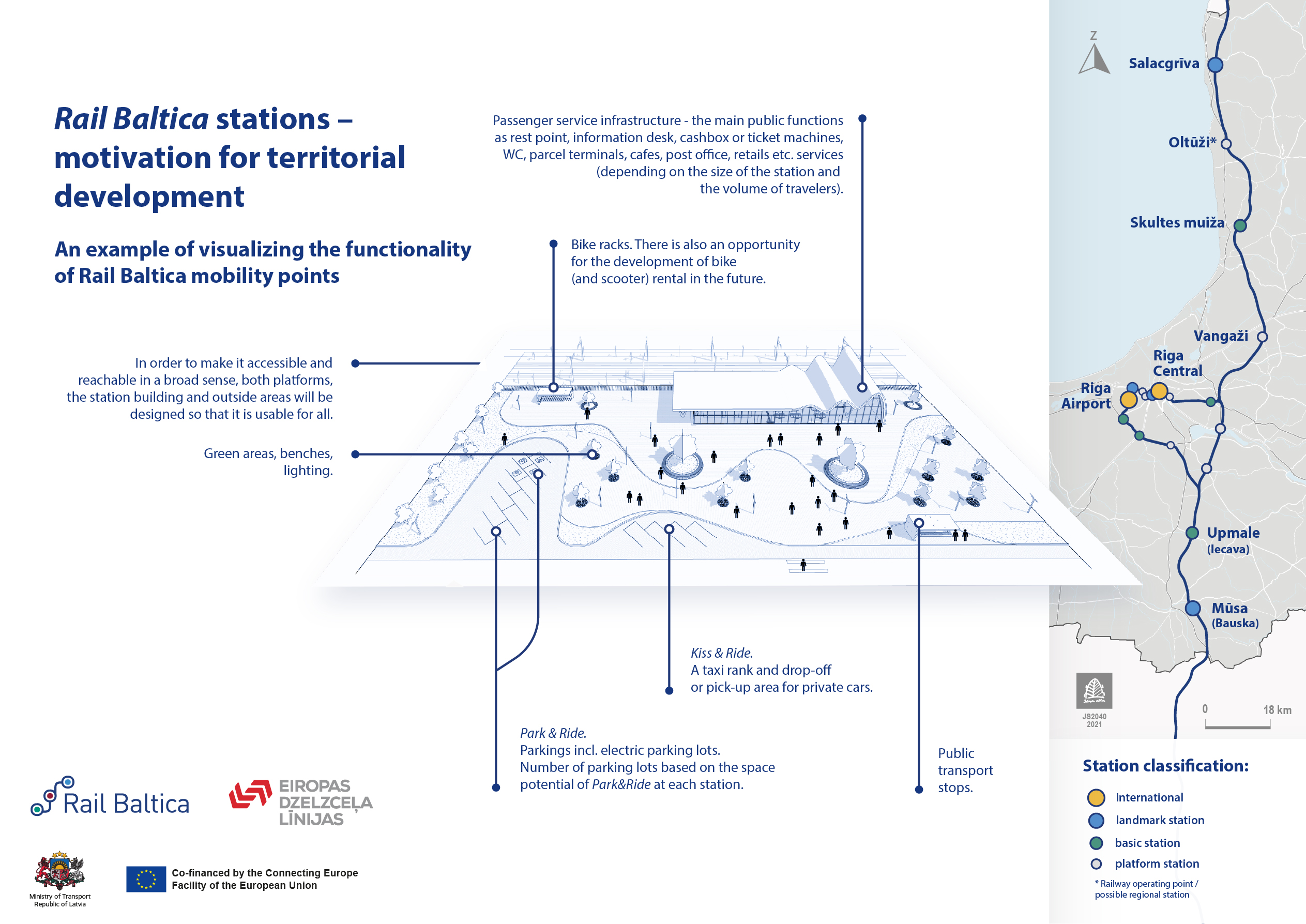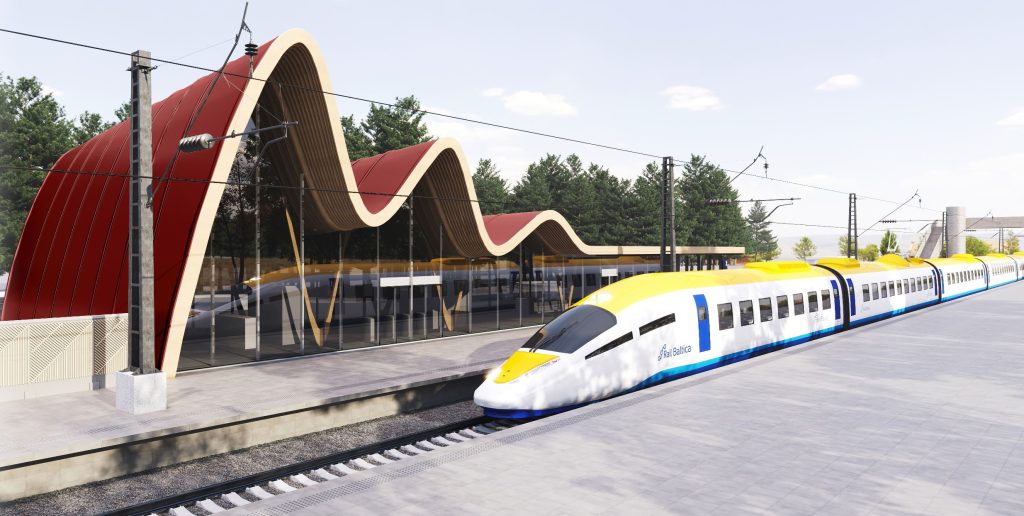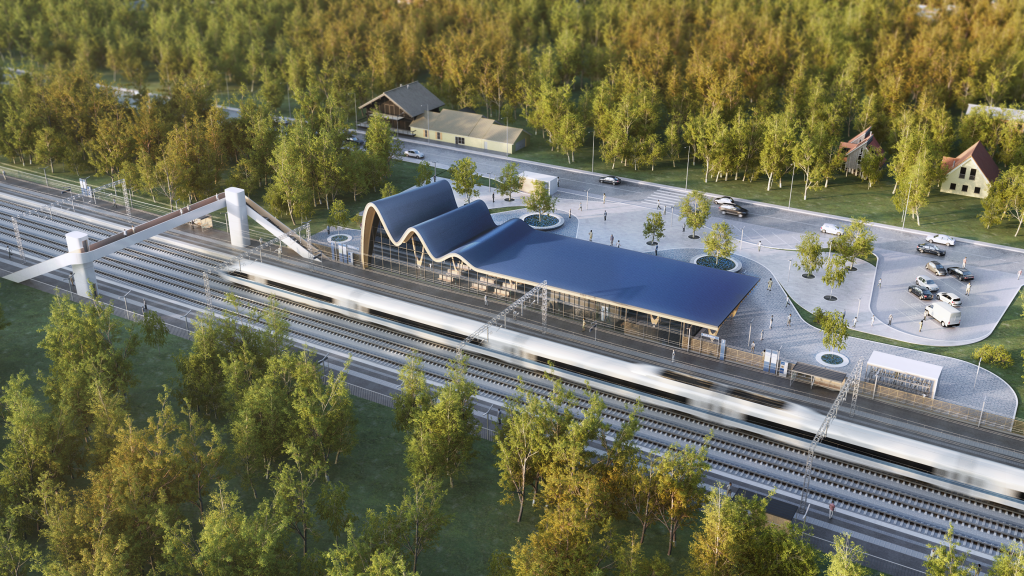In this article, with Ilze Lukstiņa, Project Coordinator at Eiropas Dzelzceļa līnijas, we briefly explore the concept and functionality of Rail Baltica regional stations and their significance in the larger context of the Rail Baltica project. These stations will serve as vital hubs for seamless connectivity, sustainable travel, and enhanced accessibility shaping the future of transportation in the region.
 Regional mobility has become increasingly important due to various factors such as the rising demand for transportation, the need to mitigate emissions, and the desire for accessible and high-quality mobility options. Regional stations serve as vital hubs connecting different transport modes and offer seamless travel experiences for passengers. “However, they can be much more than mere transition points; they can become vibrant centers within their respective neighborhoods, serving specific purposes and fostering community engagement,” says Ilze Lukstiņa.
Regional mobility has become increasingly important due to various factors such as the rising demand for transportation, the need to mitigate emissions, and the desire for accessible and high-quality mobility options. Regional stations serve as vital hubs connecting different transport modes and offer seamless travel experiences for passengers. “However, they can be much more than mere transition points; they can become vibrant centers within their respective neighborhoods, serving specific purposes and fostering community engagement,” says Ilze Lukstiņa.
To achieve the desired goals of regional mobility, several key aspects should be considered when designing and developing these stations.
- Firstly, the transition from private vehicles to public transport should be facilitated by providing convenient and efficient connections.
- The primary objective is to move people and enable multimodality, allowing passengers to seamlessly switch between various modes of transportation.
- Furthermore, integration into the existing transport system is essential to ensure efficient and smooth mobility within the region.
Future-Proofing Regional Stations: Flexibility, Modularity, and Scalability for Changing Mobility Needs
In order to cater to the diverse needs of different regions and adapt to changing conditions, future regional stations should possess flexibility and modularity. This includes accommodating electric cars and providing charging infrastructure, as well as considering parking space requirements. Modular stations allow for the flexible allocation of functions and services, creating an environment that best suits the specific needs of the surrounding area.

“When designing regional stations, it is crucial to think beyond the present and consider future generations. These stations should be built with adaptability in mind, capable of meeting the evolving demands of mobility,” Ilze Lukstiņa points out. By predicting the passenger flows and requirements of specific locations, station sizes can be determined accordingly. The concept of modular stations facilitates scalability, ensuring that even the stations with initially smaller passenger flows can grow and accommodate increased demand over time.

The Role of Local Communities in the Success of Regional Stations
The role of local communities in the development and utilization of regional stations cannot be overstated. Municipalities have the power to shape the vision for the area surrounding the stations, taking into account the specific needs and aspirations of their communities. Effective communication and cooperation between stakeholders are essential to ensure that the stations become integral parts of the local infrastructure, supporting the overall development and well-being of the region.
Promoting Accessibility: Building Inclusive and Safe Regional Stations for All
A strong emphasis should be placed on ensuring accessibility for all individuals, including those with disabilities. Regional stations must adhere to European standards, providing solutions that cater to the safety and accessibility requirements of people with diverse needs. For instance, the absence of level crossings ensures safety for pedestrians, while elevators enable easy access for individuals with disabilities, parents with strollers, and cyclists. The goal is to make every part of the station accessible to everyone, promoting inclusivity and equal opportunities for all.
Fostering Baltic Identity: Unique Designs and Shared Elements in Rail Baltica Regional Stations
The design of Rail Baltica regional stations should reflect the Baltic characteristics and foster a joint Baltic identity. Each country within the Rail Baltica project – Estonia, Latvia, and Lithuania – will have its own unique station design with shared elements. For example, the station in Lithuania may feature a green roof, while the Estonian station could have blue accents, and the Latvian station may incorporate a red color scheme. Additionally, the use of natural materials like wood can reflect the Baltic characteristics and create a warm and welcoming ambiance.

In conclusion, the future regional stations in Latvia as part of the Rail Baltica project hold immense potential to transform regional mobility and contribute to sustainable development. These stations should embody the principles of seamless travel, multimodality, adaptability, and integration within the existing transport system. By incorporating Baltic characteristics into their design and actively involving local communities, these stations can become not only efficient transit points but also vibrant centers that enhance the quality of life and contribute to the growth of the regions they serve. Moreover, by prioritizing accessibility and inclusive design, the stations can ensure that every individual can benefit from the improved mobility options offered by Rail Baltica. As we build the railway for the future, let us envision regional stations that meet the needs of our grandchildren and leave a lasting positive impact on our communities.
To gain a more profound understanding of how these stations will contribute to regional development and drive positive change in the Baltic region, watch Ilze’s insightful lecture on Rail Baltica YouTube channel.
For detailed insights into a study on maximization of the broader socio-economic benefits or Gross Value Added (GVA) for Rail Baltica regional stations, read this article. The study highlights the significance of regional stops in driving population and business relocation, while improving connectivity and accessibility in rural and peripheral areas. With efficient development of regional passenger services, Rail Baltica can contribute significantly to regional cohesion and local economic growth.
